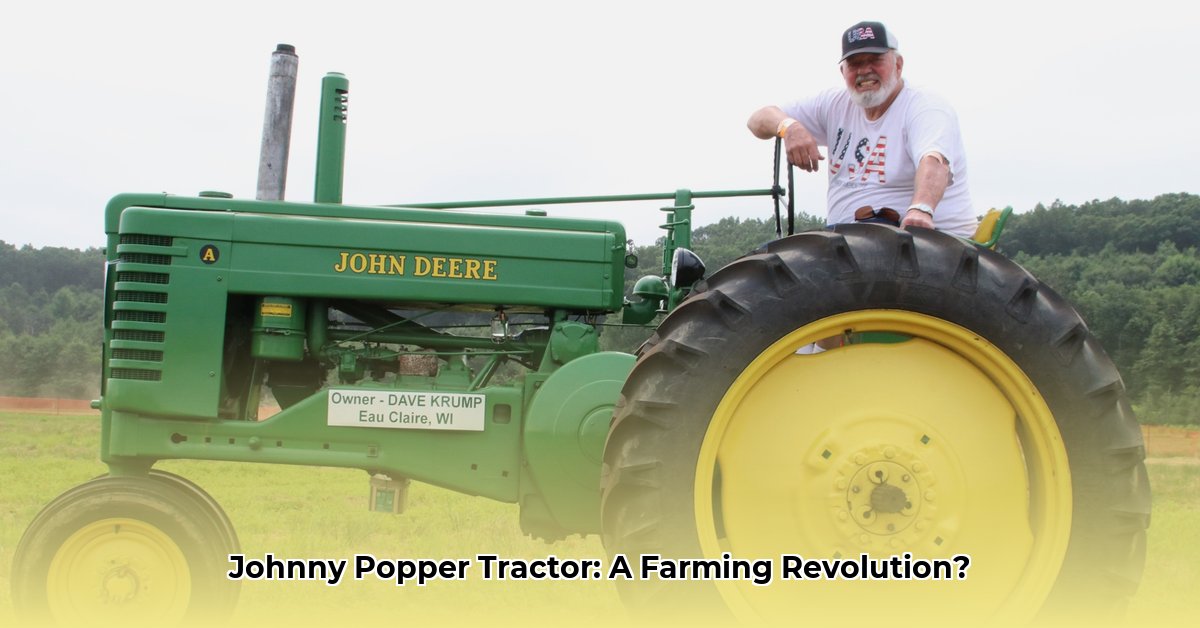
A Legacy Forged in Steel and Sustainability
The rhythmic chug of a two-cylinder engine, punctuated by the distinctive "pop" that gave it its nickname, the "Johnny Popper," is the unmistakable sound of the John Deere Model A tractor. More than just a machine, it represents a pivotal moment in agricultural history—a moment that resonates deeply with contemporary concerns about sustainable farming practices. This isn't simply a story about a tractor; it's a narrative of ingenuity, resourcefulness, and a surprisingly prescient approach to environmentally conscious agriculture. Did you know that this relatively compact tractor, boasting a 25-horsepower engine, was revolutionary for its time? How did such a seemingly modest machine help shape modern sustainable farming? For more vintage tractor images, check out this gallery.
The Revolution on Wheels: Efficiency and Innovation
Imagine the early 20th century, where horse-drawn plows were the norm. Farming was arduous, inefficient, and heavily dependent on animal labor. Then came the Johnny Popper, offering a reliable, engine-powered alternative. This wasn't merely incremental improvement; it was transformative. Farmers suddenly had access to significantly increased power and efficiency. The immediate impact was a dramatic increase in productivity.
But the Johnny Popper’s influence extended beyond raw power. Its innovative use of rubber tires stood out amongst its steel-wheeled predecessors. These tires significantly reduced soil compaction, contributing to healthier soil and enhanced crop yields. This seemingly small design choice had profound consequences for sustainable land management – a concept far ahead of its time. The enhanced traction also enabled farmers to work larger fields in less time, leading to greater efficiency and lower labor costs.
Beyond Horsepower: The Unexpected Sustainability Champion
The Johnny Popper's lasting impact extends significantly beyond improved efficiency. Its design inherently incorporated principles of sustainability that are only now gaining widespread recognition. Its smaller engine, compared to later, more powerful tractors, meant substantially lower fuel consumption. This wasn't a secondary consideration; it was a core element of its design philosophy—a frugal approach remarkably aligned with today's emphasis on responsible resource management. How many modern machines can boast such a legacy of fuel efficiency?
Moreover, these weren't disposable machines. Built to endure, Johnny Poppers were often passed down through families for generations, testament to their robust construction and the strong bond between farmers and their equipment. This longevity translated to fewer replacements, significantly reducing environmental waste and the carbon footprint associated with manufacturing and disposal. Was this intentional foresight, or simply an inherent design quality that proved remarkably prescient?
Adapting to the Evolving Needs of Agriculture
The Johnny Popper wasn't a singular model but a family of tractors, with variations like the Models 61, 620, and 630. Each adaptation reflected the changing agricultural landscape, showcasing John Deere’s understanding of the farmer’s diverse needs. This adaptability is a critical aspect of its enduring legacy, suggesting a design philosophy prioritizing long-term usability over short-lived trends. As farming practices evolved, the Johnny Popper adapted – a critical factor in its sustainable influence.
A machine capable of tackling various terrains and crops across multiple generations is inherently more sustainable. Its adaptability minimized the need for frequent upgrades, further contributing to its lower environmental impact.
Sustainable Practices for the Future: Lessons from the Past
The Johnny Popper's legacy offers valuable insights for modern farming practices:
- Durability: Building machines designed for longevity reduces waste and promotes circular economy principles. Repair and reuse should be prioritized over immediate replacement.
- Fuel Efficiency: Sustainable agriculture demands mindful resource consumption. The design of agricultural equipment must prioritize minimal fuel use.
- Adaptability: Flexibility is paramount; equipment should seamlessly adapt to diverse farming practices and environments to maximize its productive life and minimize waste.
The enduring legacy of the Johnny Popper extends beyond its mechanical aspects. It embodies the human connection to the land and the tools employed to cultivate it. Its story reminds us that innovation and sustainability are not mutually exclusive; indeed, they can complement each other to create a more environmentally and economically responsible future for agriculture.